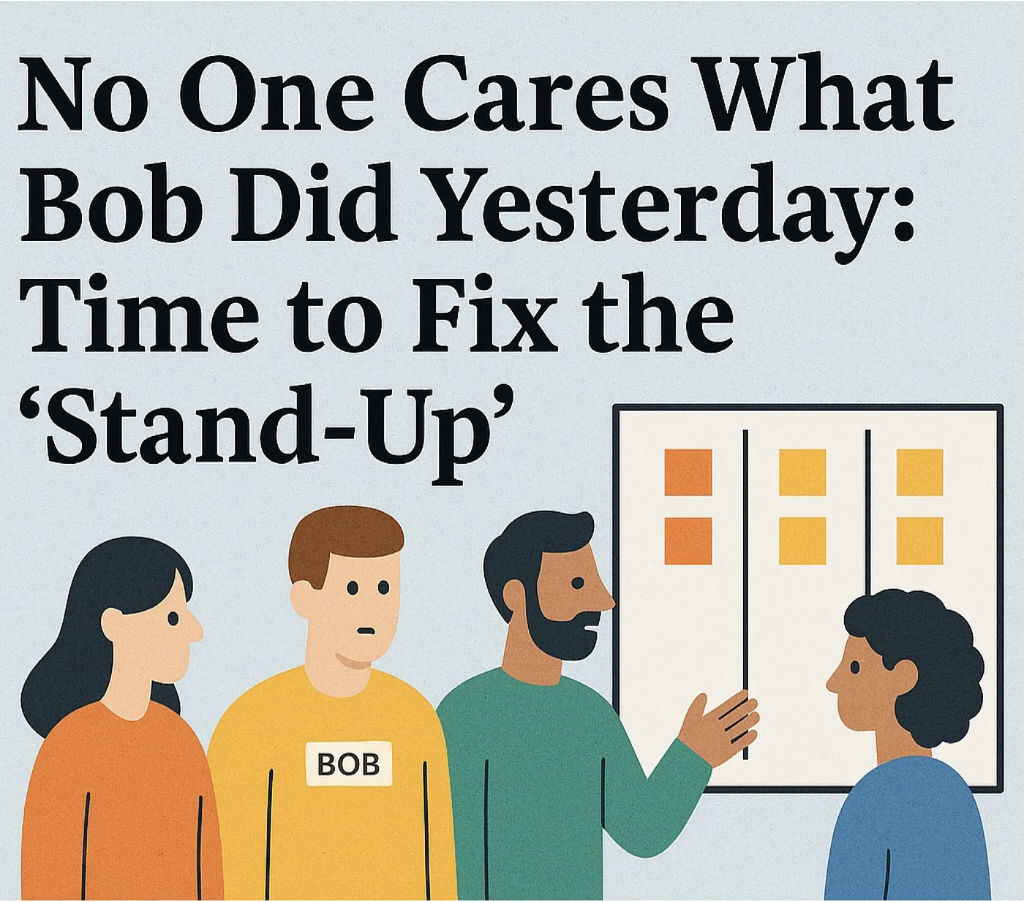Do you treat internal vs external blockers differently?
Whether it's a dependency on another team, an external supplier, a lack of information, a decision that doesn't arrive, a technical problem or the absence of the necessary skills, every workflow system sooner or later encounters obstacles that will slow down or even completely block the delivery of value.
As part of the search for flow optimization, minimizing these blockers to maintain a fluid, predictable workflow is crucial.
But should internal blockers be treated differently from external ones?
First of all, what is the difference between these two types of blockers?
Understanding the Nature of Blockers
Before deciding how to act, let's clarify what distinguishes an internal blocker from an external one.
To do this, let's introduce the notions of fields of control, fields of accountability, sphere of influence and beyond.
- Span of control: That over which the team or individual has total responsibility and authority.
- The sphere of influence: that which the team or individual does not directly control, but on which they can have an impact, for example by proposing improvements, negotiating changes or raising awareness, or even persuading decision-makers (those who have control over this field).
- Beyond the sphere of influence: This is a space where the team or individual has no control, responsibility or influence.
Between the span of control and the sphere of influence, we find an intermediary field : the span of accountability. This is the field in which a team or individual is committed, but which requires collaboration and delegation with other players who share the same objective.

Fig 1 : 2 teams set up, each with their own span of control, shared span of accountability
An internal blocker will be qualified as such if it occurs in the span of control or accountability. They will appear within the team or teamwork system of teams linked by a common objective. They may be linked to process failures, a lack of clear communication, or internal decision-making that fails to take place, or takes place without the consensus and acceptance of the team as a whole.
An external blocker, on the other hand, is something that occurs within the sphere of influence or beyond. It therefore involves external stakeholders or systems. They include dependencies on other teams outside the span of accountability, organizational constraints or regulatory (e.g. legal validation, compliance), or third-party suppliers.
Their impact is the same: a work item can no longer move forward, which lengthens its cycle time, causes variability and therefore reduces predictability, and ultimately reduces the possibility of creating value.
How to deal with internal blockers?
Internal blockers are easier to deal with, because they are under the direct control of the team or a system of teams, or individuals sharing a common goal. Here are some key strategies:
- Visualize and signal immediately
- Use a strong visual signal on your Kanban board (e.g. a specific color, a sticker).
- Encourage a culture of transparency where reporting a blocker is seen as an act of responsibility, not one of weakness.
- Analyze root causes
- Why is this item blocked?
- Is it a recurring problem?
- Is it a structural bottleneck?
Useful techniques: Pareto diagram, root cause analysis, 5-Why, evaporating cloud
- Limit the accumulation of blockages
- The more the WIP (number of elements in progress) is controlled, the less likely it is that internal blockers will occur. An essential approach to WIP control is element age control.
- Identify the system constraint and “protect” it with a buffer (DBR Kanban board). This approach makes it possible to control the most critical area of the system, and the risk of aggravating the situation if left unchecked. The system becomes more stable, less prone to work no longer flowing smoothly through it.
- If there are too many internal blockers, the team has to review the system in depth. The incremental resolution approach may not be the best one to follow. “Desperate times call for desperate measures”
- Experiment and adapt
- The more complex the system, the more difficult it will be to predict the effects of the actions implemented. It will be necessary to apply an empirical approach.
The good news is that these are internal blockers, within the control of the system in question, and therefore controllable and manageable by it. With this type of blocker, the system is master of its own destiny.
Ok, so what about external blockers?
How do you deal with external blockers?
External blockers are more difficult to control and resolve, but that doesn't mean they have to be passively accepted.
- By managing dependencies upstream
- Anticipate possible blockers by mapping dependencies, and studying the risk and impact of a potential external limitation.
- Collaborate with external teams to establish and understand service level expected (SLE). This will enable you to set up a communication flow based on factual alerts of the risk of delays impacting you. This knowledge of the expected service level enables you to identify the risks of the plan you are drawing up, and to anticipate accordingly.
- By creating organizational transparency
- “Promises only bind those who believe them”. Unexpected things will happen to you, but also to those external teams to which you are linked.
It's therefore crucial to: - clearly visualize how work flows both internally and externally. On your side, be clear about the fact that the item is in external hands (e.g.: a specific column in your workflow “Waiting for external party on XXX”). This will enable you to collect factual metrics, and if the external actor fails to do so, you'll be able to raise the alarm of a delay becoming problematic.
- identify the key players who can help remove any blocker and limit the impact is definitely something you should also consider.
- By implementing a blocker management policy
- Define clear protocols: how long can an item remain blocked before escalation is necessary? Or a contingency plan is activated?
- If possible, introduce a workaround mechanism or temporary solution to reduce the impact of the blockage.
What internal and external blockers have in common
Even if the impact and strategies differ, the aim is the same: to speed up resolution and restore optimal flow. An effective, common approach is to:
✅ Measure blockers, whatever their source.
- Track blocking times by type (internal vs. external).
- Analyze the frequency of root causes.
✅ Create a feedback loop to prevent recurrence.
- If a blocker is recurring, it's a strong signal that a systemic problem needs to be resolved.
- Experiment with solutions and measure their impact.
✅ Make blocker management a collective reflex.
- In Kanban, the system belongs to everyone.
- The more proactive the Kanban system team is in dealing with blockers, the more the system stabilizes and the flow becomes smooth and predictable.
Conclusion: an anti-fragile flow is a flow that learns from its blockers.
Blockers, whether internal or external, are opportunities for improvement. The question is not so much “how to avoid them?”, but rather “how can we make them visible, deal with them effectively, and then learn from them?”
This approach will enable you to create an anti-fragile flow, which will be resilient to complexity, and therefore unforeseen events that arise, which will help you and your system emerge ever stronger, and improved each time.
So, how is your team managing its blockers today? What signals do you use to anticipate and resolve flow interruptions? Share your experiences!
#Kanban #Flow #BlockerManagement #Agility #ProKanban



